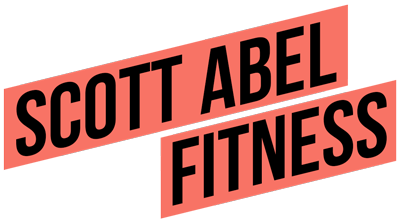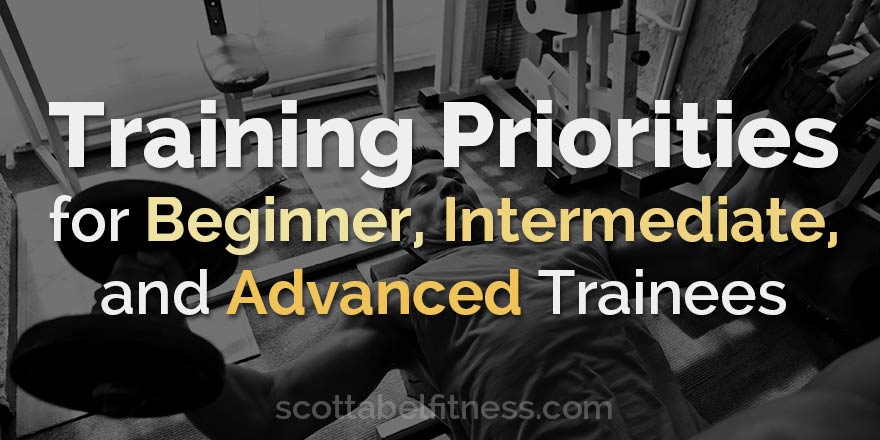The first real gym I went to was a local YMCA. After kicking around the “Y” for a bit I managed to connect with a guy who had won the Mr. Canada title the last several years in the lightweight category.
He agreed to let me train with him.
I was more like his lackey. I was always the one to change the weights on the bar, put the weights away and whatever. I didn’t mind, though. For the first time, I was in the gym, working out according to a plan.
I put on 35 lbs. over that summer. It wasn’t all muscle to be sure, but most of those 35 lbs. seemed to go to all the right places. When I returned to school in September, people couldn’t believe it.
No one ever makes gains like you do when you first begin training. At the beginner level, with any kind of even remotely viable program, those will be the best and fastest gains you will ever experience.
I’m going to tell you how to take advantage of this phase. Then you’ll learn exactly how your focus and approach has to change as you become an intermediate, and then an advanced trainee.
When you transition from intermediate to advanced, the changes you need to make are actually counter-intuitive—this is why so many trainees never make these changes. So, if you want a sculpted physique, and you don’t want to spin your wheels for years on end, pay attention!!
The Beginner Trainee (“Newbie Gainz”)
On separate occasions, Fred Hatfield and Bill Pearl each shared eerily similar anecdotes with me.
They each had a young kid come to them at their gym, wanting to put on weight and get bigger. They both hired these lads to clean up the equipment every day and put weights away. They didn’t train the kids, they just hired them to clean up the weights, and let them piddle around when they wanted to.
Both kids put on 15 lbs.!!
Again… they were just piddling around – carrying weights back and forth.
Most people who heard these stories were incredulous. I wasn’t – I’d put on 35 lbs. myself not doing much more than this.
If we’re talking about a young male, then if you just “show up” in the gym and “lift something” consistently, you’ve got everything working for you: hormones, lack of adaptation, lack of an ability to tap into real recovery etc.
Thus: the neural and muscular changes will come from training, but the number one most important thing during this phase is developing good training habits.
YOU MUST LAY THE FOUNDATION – AND THAT BEGINS WITH HABITS.
How to do this:
- If possible, seek out and get good instruction on proper form.
- Learn to show up consistently.
- Learn not to overdo it for a week then avoid the gym for three weeks!!
- Learn to stick to some form of structured programming. Find a program and FOLLOW IT.
- Learn the basic compound movements. You need to get them right, you will also establish a sound neural network and optimize muscle innervation, which provides you a foundation for the future. In my books I have referred to setting up “neural highways.” This is that. (Later you build the on-ramps and off-ramps.)
- Use exercises in as many planes and ranges of motion as possible, and don’t neglect bodyparts.
- If the goal is muscle development, then this means varying reps schemes as well, in order to capitalize on the innervation and neural networking mentioned above.
The Intermediate Trainee
Eventually, your body adapts, and the beginner phase is over.
Your body requires greater stress to stimulate further adaptive response, and the trainee has developed the work capacity to deliver that stress, in the form of training.
However, this also means the intermediate phase will also demand more focus on recovery.
You must now consider dividing up how the body is stressed with resistance. You see simple splits like upper body/lower body, push/pull, and you see standard bodypart splits of varying kinds. The point is that at the intermediate phase of your work capacity, you have to consider your recovery capacity.
You’re finally strong enough to lift loads and get into volume that can tap into your recovery capacity. That’s where proper, progressive, and planning programming comes in.
This is where so many trainees get so far off track.
They focus way too much on workouts and intra-workout tactics (like forced reps, negatives, drop sets, strip sets, rest/pause, static holds, etc.), but they give little consideration to an overall strategy that considers their recovery capacity.
In other words, precisely when they should be focused more on recovery, they’re starting to try tactics that affect their recovery even more… and they do it in a totally haphazard way.
I’d thus agree with Mark Rippetoe’s assessment of the intermediate trainee:
“95% of people who take up training never ever really progress past this stage.”
This is true no matter how many years a trainee keeps going to the gym if they’re too stubborn to stick to a real program.
This doesn’t mean getting lost in numbers, or Excel spreadsheets, or complex periodization schemes where you need a calculator to figure out how much weight to put on the bar. Not at all!
But it does mean being smarter about how individual workouts fit within a larger program, and how programs fit within a larger context of adaptation, recovery, and hypertrophy.
It also means sticking to programs such as this, and sticking to your programs consistently rather than off-and-on or pinballing.
Here are the mistakes trainees tend to make:
- They don’t do any program at all, or they just do a lousy program.
- They ruin a good program with tactics like extended sets, drop sets, negatives, forced reps, and so on.
- They do a strength program when they’re seeking hypertrophy and size.
- They pinball between programs.
Often one mistake causes another. The trainee gets frustrated with a lack of progress, so they try harder by adding more tactics, or they pinball to another program. Or they get scared that they’re not adding weight on the bar – even though some good things are happening – so they switch to a strength program.
Your training strategy is going to have to be managed correctly from this intermediate phase and going forward, if you expect to keep progressing.
To make a long story short: when you are an intermediate trainee, learn or follow proper programming strategy (or hire a Coach who knows what he/she is doing), because that’s your priority now.
The Advanced Trainee
At the advanced level, everything is slow. Look at an Olympic athlete in track or swimming who prepares for years to shave off a few hundredths of a second.
Recovery is still extremely important. Because of their advanced work capacity – forged over time, with experience in the trenches – the advanced trainee can cause real damage to their bodies with a high volume of very intense workouts.
So, how does the advanced trainee continue to make progress?
For one, you need to have a true and authentic passion for the training and for working out, since results are so hard to see. You have to have the passion to keep going. For the advanced trainee, “the process is the goal and the goal is the process.”
Counter-intuitively, though, this passion, and this emphasis on the process, is also so important because an advanced trainee needs to know when to hold back. They need to be willing to go for base hits instead of home runs, so that they can stay consistent, and stay in the game.
The common mistake (one I was guilty of myself) is thinking you have to train harder when now you really do need to train smarter.
Training smarter often means backing off from training at your maximum work capacity and learning how to train at your optimum work capacity. These are two very different things! Put simply, it’s the difference between what you can do versus what you should do.
You also need to be able to listen and pay attention to your body and your biofeedback, because it will tell you whether what you’re doing is truly optimal.
This means at the advanced level, things become much more inside out, instead of outside in.
At this level, it can “look” like nothing is happening on the outside. You need to be able to feel what’s happening on the inside. This comes from “internal cues” like how you feel, how stressed you are, how fired up you are for each training session.
You need to develop a capacity for personal training insight and intuition. You need to know when a workout feels right, because it is a reflection of things like your internal biochemical and hormonal environment, and how it is reacting to your training.
This is a level of training maturity few people ever reach. But when you do, it is the most rewarding form of training there is.
You need to know things like:
- When you are getting a good muscle pump or feel in the gym.
- When you are looking forward to your workouts.
- When you are sleeping well.
- When you feel like your body is talking to you with positive messages and feedback.
- When lifestyle factors are affecting all of the above.
You don’t need a lab coat to experience these things, or to pay attention to what affects them.
You can’t look for advanced-level progress with a weight scale or tape measure, not when that progress is both infinitesimal and non-linear. As Einstein said, “Not everything that counts, can be counted.”
Conclusion
When you think about your programming, then, think about where you are at, right now.
I will often get clients telling me something like, “Y’know, when I first started I did [insert program] and I made great gains. I think I’ll go back to that!”
This is a mistake. First, when they “first started” it wasn’t necessarily the program they did that led to the great gains back then; it was the fact that their body was totally unadapted to any kind of stress. Anything would have worked. That same training is likely to offer nothing special now. This is like thinking you can read See Spot Run again and learn something new from it.
Overall, all of this points to why proper, progressive, planned, and personalized training program design becomes so important if you ever want to reach the advanced levels and sculpt an amazing physique. Your program should account for your work capacity and recovery capacity, your ability to train with intensity, your lifestyle factors, your athletic background. If it doesn’t, you’ll be running in circles. If you don’t have a coach, you need to be brutally honest with yourself about where you are at, right now.
As usual, I suspect some of you will get it; some of you will not.

